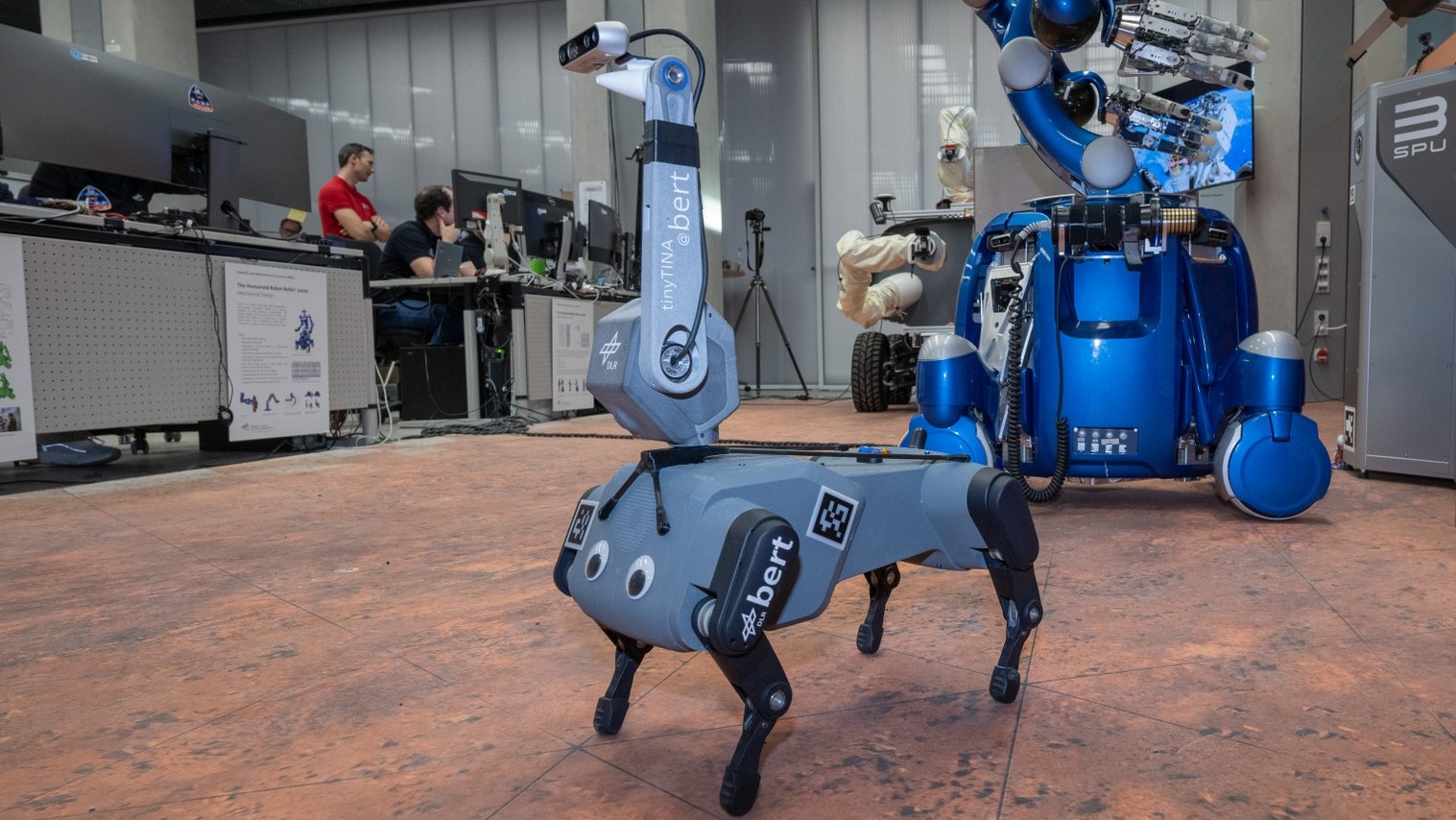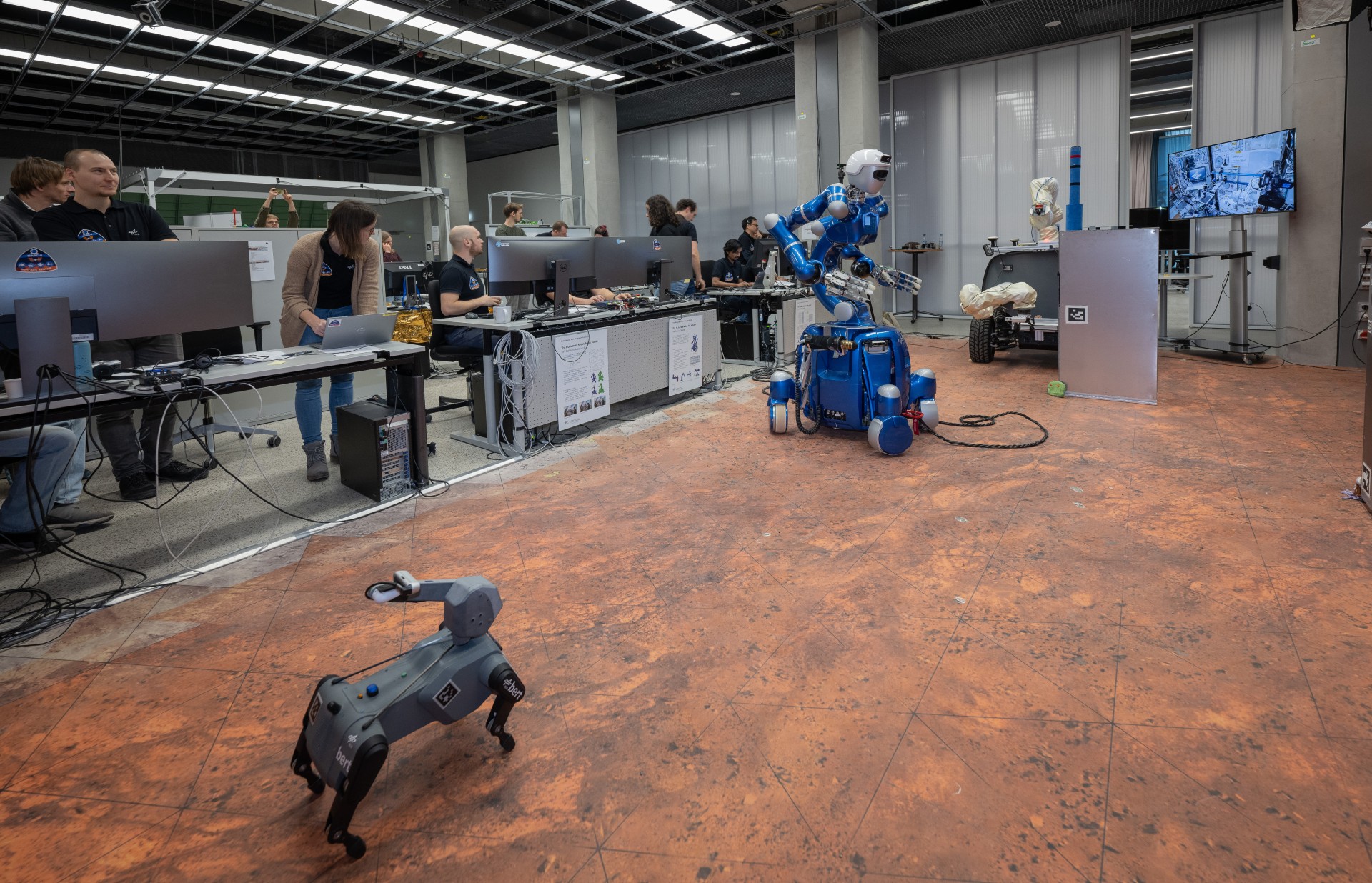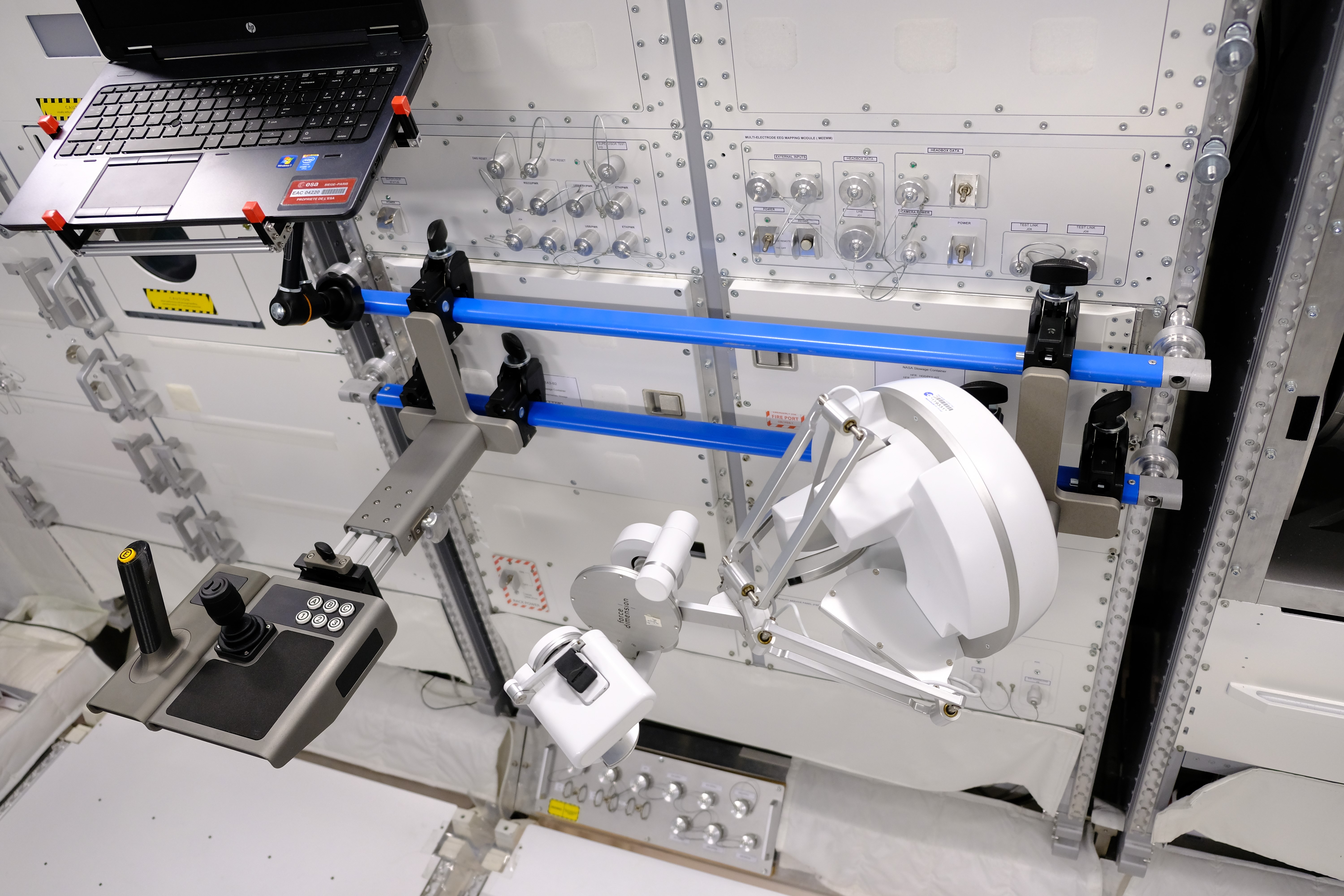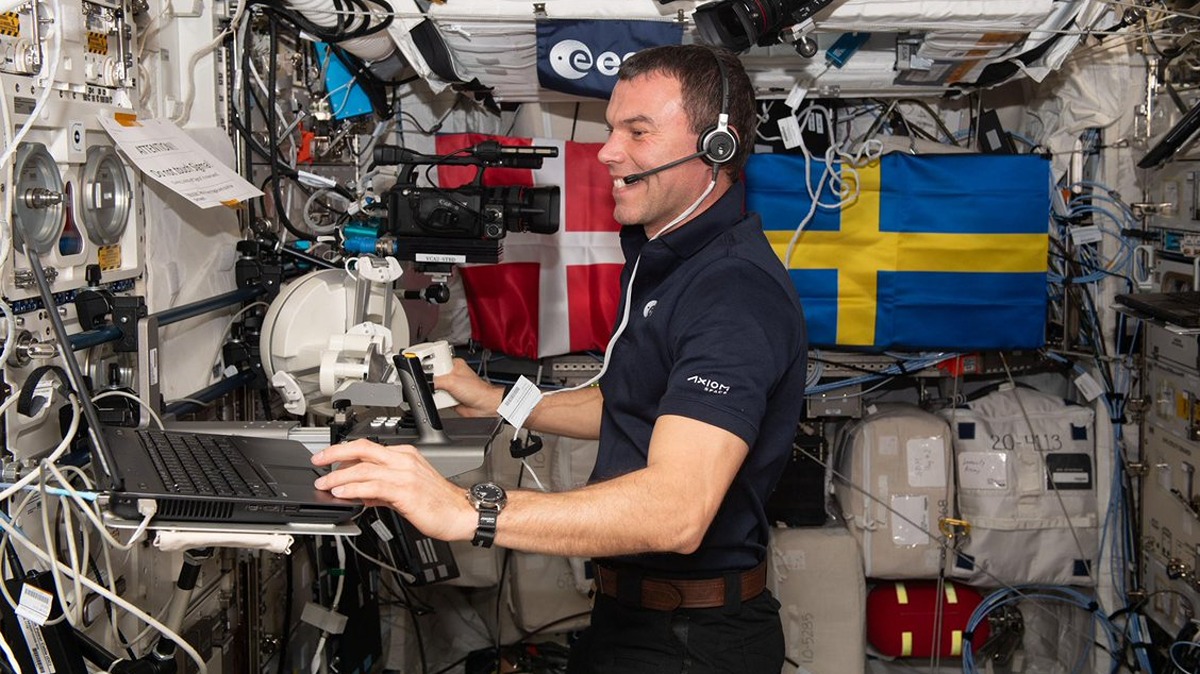ISS astronaut controls Bert the dog-like robot on Earth during simulated Mars mission

Space robotics has gone to the dogs.
International Space Station astronaut Marcus Wandt controlled Bert, a four-legged robot pal, from space for the first time in January. Putting legs on a robot, instead of wheels, may allow machines to more easily climb hills or crawl into caves on Mars or other worlds, project manager DLR (the German space agency) said in a recent statement.
"Until now, only wheel-driven robots have been controlled remotely from space by astronauts," DLR officials wrote. "But Bert has mastered several types of gaits and, thanks to his leg-based locomotion, can even explore rough terrain, including small caves, that his rolling teammates cannot reach."
Related: Meet Rollin' Justin, the human-like robot that astronauts control from space
DLR has run years of practice with other ISS astronauts; this most recent experiment followed on from work done in July 2023 to see how "time delays affect the control of robots during space missions", the release stated.
It takes several minutes to send a signal between Earth and Mars, necessitating new ways of working in that environment. And even astronauts in orbit would face slight time delays of seconds between their pathway around a planet or the moon, and robots on the surface.
The robots operate at the German Aerospace Center in Oberpfaffenhofen, just west of Munich and are being operated under the Surface Avatar project, co-managed by DLR and the European Space Agency or ESA. (Wandt is also a project astronaut with ESA, flying with the two-week-long SpaceX Ax-3 mission managed by Axiom Space.)
Breaking space news, the latest updates on rocket launches, skywatching events and more!
Wandt, DLR officials wrote, "let his four-legged friend explore the lab's surroundings independently and monitor the terrain with his camera eyes." Also assisting was a humanoid robot called Rollin' Justin, who scoots about on wheels, along with ESA's Interact Rover. The group worked together to successfully install a short pipe, which is a stand-in for what could be a scientific measuring device in the future.
ESA is working under the NASA-led Artemis program to send astronauts to the moon's surface later in the 2020s, under the international Artemis Accords that aim to one day establish a moon base and permanent presence at the moon's south pole (nearby what could be abundant water resources helpful for rocket fuel, life support and other space needs, NASA has said). Artemis, space officials have emphasized, will also be a valuable testing ground for bringing astronauts to Mars in the coming decades.
Robots often undergo decades of development before being readied for space, and even those that operate there are often experimental in nature. That said, robots that work with DLR or on the moon's surface may one day be pivoted for an actual Red Planet mission, should the technology hold up after all that testing.

Elizabeth Howell (she/her), Ph.D., was a staff writer in the spaceflight channel between 2022 and 2024 specializing in Canadian space news. She was contributing writer for Space.com for 10 years from 2012 to 2024. Elizabeth's reporting includes multiple exclusives with the White House, leading world coverage about a lost-and-found space tomato on the International Space Station, witnessing five human spaceflight launches on two continents, flying parabolic, working inside a spacesuit, and participating in a simulated Mars mission. Her latest book, "Why Am I Taller?" (ECW Press, 2022) is co-written with astronaut Dave Williams.



